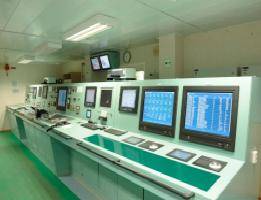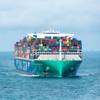FLAGSHIP Project Delivers Outstanding Results
On May 31st 2011 FLAGSHIP, a part EU-funded maritime transport project, will conclude having facilitated the research and development of no less than 10 new maritime solutions, from multiple European companies. All the new products and systems directly and indirectly improve the safety, environmental friendliness and competitiveness of European maritime transport – in precise alignment with the FLAGSHIP programme’s objectives.
Mr Emanuele Grimaldi, CEO of the Grimaldi Group, commented: “I believe that it is very important for the European shipping industry to use innovation to stay ahead of the strong international competition. Research that results in solutions that offer both a commercially compelling and environmentally sensitive approach is to be applauded; FLAGSHIP is an outstanding example of tangible outcomes from research investment.”
A well-placed source at the European Commission responded: ‘Projects such as FLAGSHIP demonstrate that by collaborating across boarders we can bring together the very best minds to help solve the challenges that the maritime transport industry faces; we will continue supporting such projects’.
The FLAGSHIP project was divided into sub projects led by various businesses from all around Europe. FLAGSHIP-TCI led by Marintek in Norway was concerned with creating Key Performance Indicators and Technical Condition Indices to enable fleet managers to compare the performance of their vessels with each other and with benchmarks. This has led to the development of a commercial product by DNV, called Top Monitoring, which monitors main engines. Commercial products monitoring auxiliary engines are expected to be launched later this year from two separate FLAGSHIP partners: Danaos and Wartsilla.
In the UK BMT led a sub project called FLAGSHIP-HCA which addressed the process of surveys and dry-dock repairs. This resulted in the German partner, Germanischer Lloyd introducing a new commercial tool called “Hull Manager”. Germanischer Lloyd also led a project called FLAGSHIP-EEM which focussed on energy savings during sailing which has resulted in a patent being secured to cover a new process of measuring and giving a direct insight in power consumption during operations and commercial products are planned for 2011.
The FLAGSHIP-Bridge Support project led by SAM Electronics in Germany has improved Integrated Bridge Systems with advanced functions for further integration of nautical information. By integrating NAVTEX messages, radar and AIS targets into a single coherent display it is possible to speed up hazard analysis, improve tracking accuracy and reduce the load on the Duty Officer. The NAVTEX (Notices to Mariners) integration is already available commercially from SAM, in NACOS 1100. AIS target merger will be available in NACOS Platinum, coming out in 2011. The portable conning unit will also be available in 2011 as Tablet PC.
Alarm Filtering was addressed by the FLAGSHIP-iCAS sub project led by Kongsberg in Norway dealing with the problem of large cascades of alarms. A first commercial version came out in May 2009 and later versions are planned. Although this system is well beyond current minimum regulations, the market has responded very positively and several orders are already being taken by Kongsberg.
Led by MJC2 a UK business, FLAGSHIP-RTS addressed real time container scheduling and matching imports and exports in order to save unnecessary truck trips. This resulted in large savings for China Shipping, the Port of Valencia and container terminals around. Several commercial solutions have since been made available including a free package called FAST, for small and medium sized UK logistics businesses.
Norway based Autronica led FLAGSHIP-ISEMS which dealt with safety condition monitoring, damage and prevention assessment, as well as ship to shore communication the learning from which is already out in the market as Austromaster ISEMS and has been installed on the largest cruise vessels in the world.
A sub-project called FLAGSHIP-DSS led by the University of Strathclyde in the UK dealt with the determination of an Index of Vulnerability. Its presentation to the crew in a recent 7-week demonstration led to an immediate improvement in practices which saw the Index fall by 45% in a single week - six orders from a wide variety of interest parties have already been received.
Mr Herman de Meester, Coordinator of FLAGSHIP commented: “The adoption of specific learning into new products for the advancement of the industry is exactly what EU projects such as FLAGSHIP are all about and are to be welcomed and encouraged. This is another example of the maritime industry working hard to meet and exceed performance standards.”
Source: Flagship














